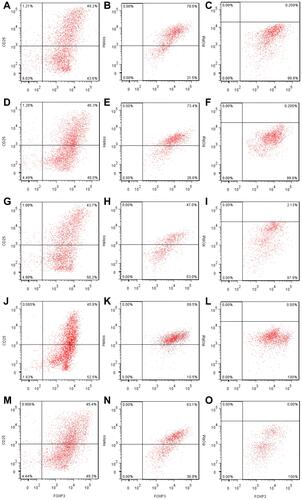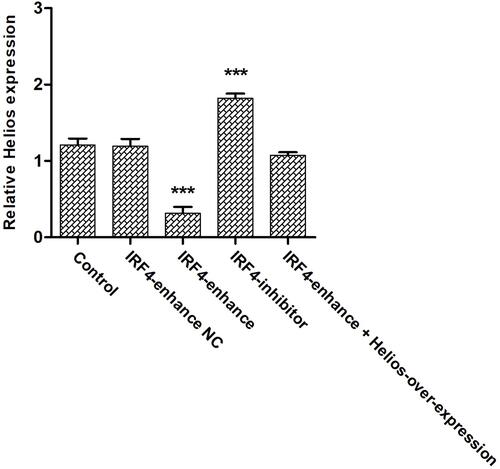Figures & data
Table 1 Clinical Characteristics of Patients with Pleural Effusion
Figure 1 The percentage of Tregs and Th17 cells from PBMCs and PEMCs. (A) Dot plots of CD4+CD25+Foxp3+Helios+ Tregs in PBMCs from patients with NSCLC. (B and C) representative dot plots of CD4+CD25+Foxp3+Helios+ Tregs and CD4+CD25+Foxp3+ RORγt+ Tregs in PEMCs from the same patient with NPE, respectively. (D and E) representative dot plots of CD4+CD25+Foxp3+Helios+ Tregs and CD4+CD25+Foxp3+RORγt+ Tregs in the PEMCs from the same patient with NSCLC, respectively.
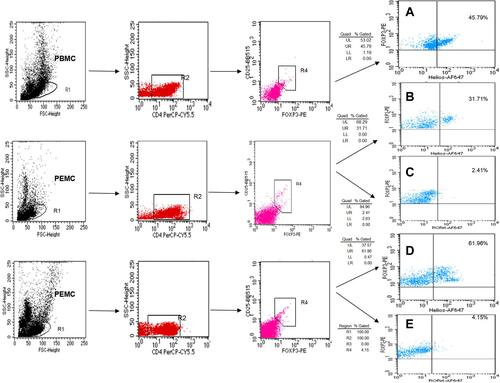
Figure 2 Association between the level of Helios+ Tregs and the ratio of Th17/Tregs on patient survival. (A) The proportion of Tregs and Th17 cells from PBMCs and PEMCs. (B) The level of IRF4 mRNA expression in MPE and NPE. (C) Patients with a higher population of Helios+ Tregs in the MPE had a significantly shorter survival time than those with lower population of Helios+ Tregs (P = 0.012). (D) Patients with a high ratio of Th17/Tregs in MPE had a longer survival time than those with a low ratio of Th17/Tregs (P = 0.016). *P < 0.05; **P < 0.01.
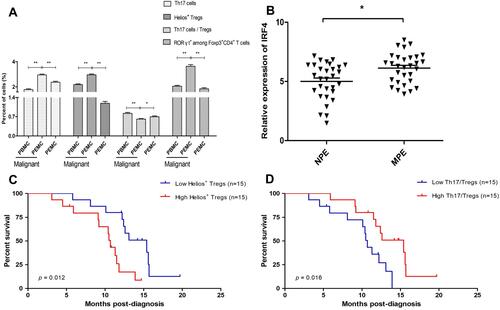
Figure 3 Scatter diagram of the correlation between IRF4 expression and population of Foxp3+RORγt+ Tregs. IRF4 expression is positively associated with the frequency of CD4+CD25+Foxp3+RORγt+ Tregs (60 patients with PE).
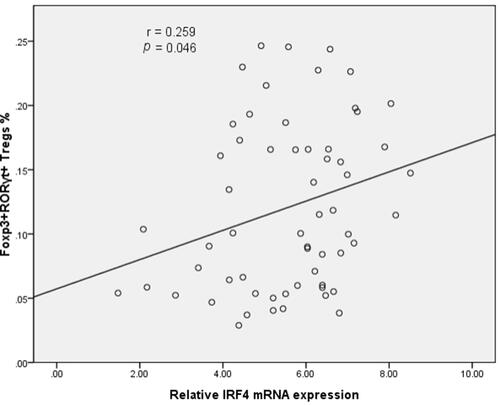
Figure 4 The generation of induced Tregs. (A) Freshly isolated CD4+CD25− T cells from PEMCs of an NSCLC patient by magnetic bead sorting. (B and C) CD4+CD25+Foxp3+ Tregs were produced by cytokine stimulation. (D and E) Helios expression in induced Tregs and non-Tregs, respectively.
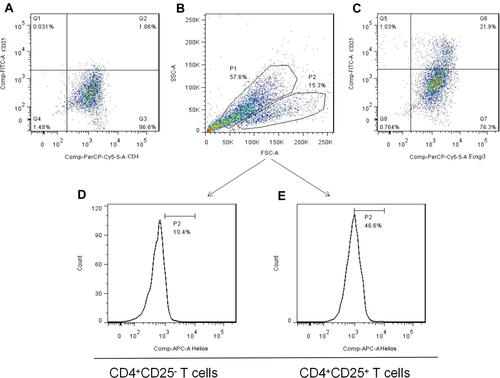
Figure 5 The effects of IRF4 on the function of induced Tregs. (A–C) The level of Helios and RORγt protein expression in induced CD4+CD25+Foxp3+ Tregs transfected with negative controls (Helios: 78.5%, RORγt: 0.209%). (D–F) The level of Helios and RORγt protein expression in induced CD4+CD25+Foxp3+ Tregs transfected with IRF4 control (Helios: 73.4%, RORγt: 0.200%). (G–I) The level of Helios and RORγt protein expression in induced CD4+CD25+Foxp3+ Tregs transfected with enhanced IRF4 (Helios: 47.0%, RORγt: 2.13%). (J–L) The level of Helios and RORγt protein expression in induced CD4+CD25+Foxp3+ Tregs transfected with an IRF4 inhibitor (Helios: 89.5%, RORγt: 0.00%). (M–O) The level of Helios and RORγt protein expression in induced CD4+CD25+Foxp3+ Tregs transfected with enhanced IRF4 and Helios over-expression (Helios: 63.1%, RORγt: 0.00%).
